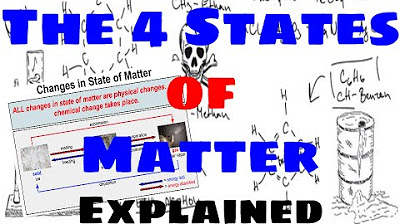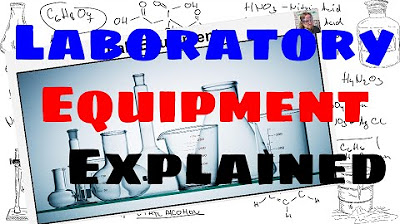The Articles of Confederation - 1.7 Benchmark: Civics EOC 2024
Summary
TLDRIn this educational video, Mr. Raymond discusses the weaknesses of the Articles of Confederation, the first U.S. Constitution, and how these shortcomings led to the drafting of a stronger Constitution. He explains key terms such as 'ratify' and 'confederation,' illustrating how the states' desire for independence resulted in a weak central government that lacked taxation and executive powers. The video highlights critical issues like Shay's Rebellion, which underscored the necessity for a more effective national government. Ultimately, it sets the stage for understanding the transition from the Articles of Confederation to a more robust Constitution.
Takeaways
- 📜 The Articles of Confederation served as the first constitution of the United States, drafted in 1777 during the Revolutionary War.
- 🇺🇸 The original 13 colonies became 13 states and sought a central government to unify efforts against British rule.
- ⚖️ A constitution is like a rule book for government, outlining how it operates and its powers.
- 🚫 The Articles of Confederation had significant weaknesses, leading to the need for a stronger constitution.
- 🗳️ Each state had only one vote in Congress, causing tension between larger and smaller states regarding representation.
- 👤 There was no executive branch under the Articles, leading to challenges in enforcing laws.
- 💰 The central government could not levy taxes, making it difficult to fund military efforts and other national needs.
- ⚖️ The government lacked the ability to regulate commerce, allowing states to create conflicting trade practices.
- 📜 It was extremely difficult to pass laws, requiring nine out of thirteen states to agree, which stymied legislative action.
- 🔫 Shay's Rebellion exemplified the weaknesses of the Articles, demonstrating the urgent need for a stronger federal government.
Q & A
What is the purpose of a constitution according to the transcript?
-A constitution serves as a rule book for government, outlining how it works, what it can do, and how it is structured.
What weaknesses of the Articles of Confederation are highlighted in the video?
-The weaknesses include that each state had only one vote in Congress, there was no executive branch, Congress could not tax, and it could not regulate commerce.
Why were the Articles of Confederation ratified so late?
-The Articles were not officially ratified until 1781 because individual states were reluctant to give up their powers.
What was the relationship between the states and the national government under the Articles?
-The relationship was weak, with states retaining most of the power and the national government having little authority over them.
How did the lack of an executive branch affect the national government?
-Without an executive branch, there was no one to enforce laws, leading to difficulties in governance and law enforcement.
What event demonstrated the weaknesses of the Articles of Confederation?
-Shay's Rebellion illustrated the weaknesses, showing that the national government could not handle uprisings or enforce laws due to lack of power and resources.
What were the challenges Congress faced due to the inability to levy taxes?
-Without the power to tax, Congress struggled to fund the military, leading to reliance on state contributions and foreign loans, which were often denied.
What was the significance of the term 'Confederation' in the context of the Articles?
-The term 'Confederation' indicated a loose alliance of states working together for a common purpose, rather than a strong, centralized government.
Why was it difficult to pass laws and amendments under the Articles?
-Passing a law required the approval of nine out of thirteen states, which was a high threshold, making it challenging to enact legislation.
How did the lack of a national court system impact the governance of the states?
-Without a national court system, there was no mechanism to resolve disputes between states or enforce laws uniformly, leading to conflicts.
Outlines

Dieser Bereich ist nur für Premium-Benutzer verfügbar. Bitte führen Sie ein Upgrade durch, um auf diesen Abschnitt zuzugreifen.
Upgrade durchführenMindmap

Dieser Bereich ist nur für Premium-Benutzer verfügbar. Bitte führen Sie ein Upgrade durch, um auf diesen Abschnitt zuzugreifen.
Upgrade durchführenKeywords

Dieser Bereich ist nur für Premium-Benutzer verfügbar. Bitte führen Sie ein Upgrade durch, um auf diesen Abschnitt zuzugreifen.
Upgrade durchführenHighlights

Dieser Bereich ist nur für Premium-Benutzer verfügbar. Bitte führen Sie ein Upgrade durch, um auf diesen Abschnitt zuzugreifen.
Upgrade durchführenTranscripts

Dieser Bereich ist nur für Premium-Benutzer verfügbar. Bitte führen Sie ein Upgrade durch, um auf diesen Abschnitt zuzugreifen.
Upgrade durchführenWeitere ähnliche Videos ansehen

The Four States of Matter - Explained

Lab Equipment - Explained

3. Gr 11 Life Sciences - Population Ecology - Theory 3 Mark Recapture Method

4. Gr 11 Life Sciences - Population Ecology - Worksheet 1

PENJASKES KELAS X - SOFTBALL

Introduction to Culture [AP Human Geography Review Unit 3 Topic 1]

Menentukan Mr ( massa molekul relatif )
5.0 / 5 (0 votes)
